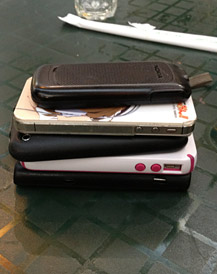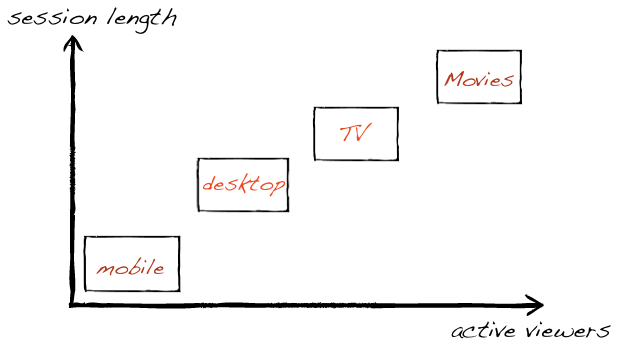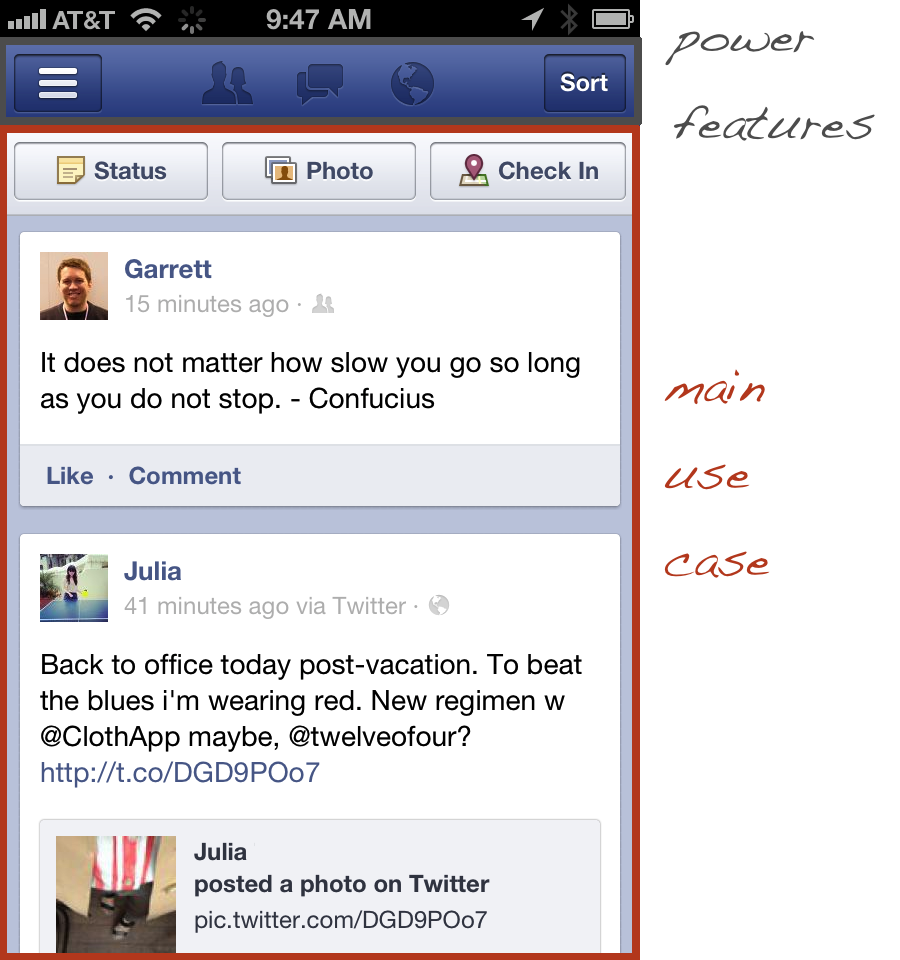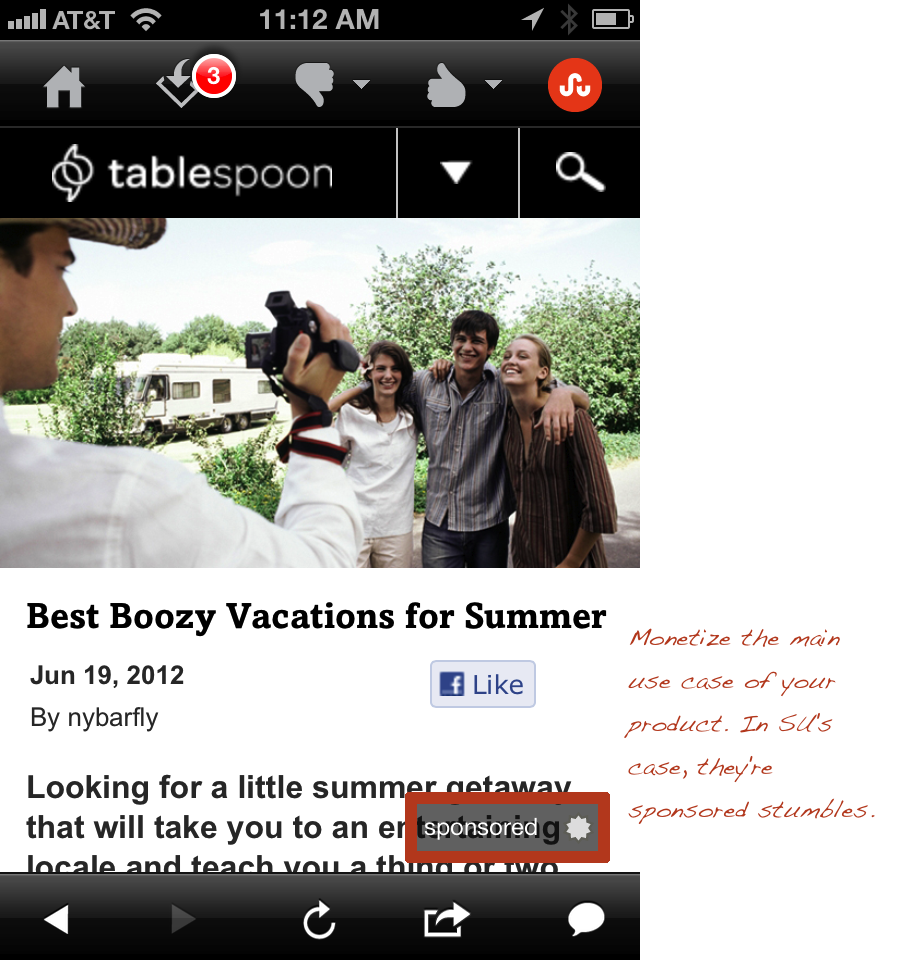Editor’s note: Jack Krawczyk is Senior Product Marketing Manager at StumbleUpon, the discovery platform. Jack was a founding member of Google+ and tweets about stuff @JackK.
No buzzwords are more prominent in today’s Silicon Valley lexicon than social and mobile. They’re so big that they have their own love-child buzzword, SoLoMo (social-local-mobile, the nerd equivalent of Brangelina). Sadly for buzzwordians: mobile is not really social, in the consumption context anyway. Building for mobile requires us to dig deeper into the role it fills in our life.
When we gather around a movie, TV or even use a desktop, we are carving out time and personally allocating our focus. Mobile does not get the same luxury. Mobile fills the gap of 2 minutes when your date leaves the dinner table; it fills the gap when we have brief moments of downtime.
As we have personalized our media, we have decreased the number of people viewing it together. The fewer people who consume media together spend less time with it. This turns mobile into a less physically social experience, and more into a quick transaction optimized for better connection with others.
Build for Bursts – The New Mobile Way
The unique nature of mobile requires us to develop for bursts in usage, rather than sustained usage as we have built for in other media. Because mobile users have a 1-to-1 relationship with their device, it primarily serves as a gap filler. Developing your mobile application should be rooted in that concept.
In the past two years, mobile has grown from zero to nearly 25% of all usage of StumbleUpon. As we’ve built the product we’ve learned some key lessons on how to get the best out of the most personal of devices:
1) Build only 1-2 core use cases; build them really really well
Mobile products have to be designed for the quick hit. The average mobile app session is about one minute long. The attention span of your user is already inherently limited, so why bog down their usage time with making a decision for which use case to execute?
Secondary use cases should be treated as power user features. Take a look at Facebook, for example. There are only two things you can do when you log into your mobile FB app: read your friends’ posts or make your own update. Think of all the other prominent navigation you see on desktop: messages, events, (gasp) groups, all in the main home screen. On mobile: they’re not a main quick hit, so they’re made secondary.
2) Personal benefit is the key to social connection
If you provide the right personal consumption experience, your users will reward you with social connectivity (i.e., sharing with their friends). We use services like Path, Foursquare, and Twitter as a means for expressing our thoughts and locations, but they are valuable because people read them. Consuming the content becomes the ultimate use case with a personal flair.
Providing personalization goes beyond just highlighting and recommending personally relevant content, it also includes presenting it in a quickly digestible format. At StumbleUpon, there are two core factors that dictate our user retention: quality of content recommendations and latency for providing those recommendations.
One major disadvantage mobile experiences against desktop is that 3G/4G connections are relatively slow as molasses. This manifests itself often in retention efforts when building for iOS and Android audiences. Instead of making the core focus of StumbleUpon’s mobile development to be in content recommendations, building latency improvements takes top billing on mobile for its retention impact.
Latency improvements make that quick hit even quicker for our users, which drives to more usage. More usage means more connection with personally relevant content. Those content connections drive 65% of our users to share out to social platforms.
3) Ads are a waste of time, build native monetization
The largest rumor floating around the SoLoMo space has been that there is a monstrous untapped opportunity for mobile advertising. Don’t waste your time in your development efforts by figuring out how to install mobile ad networks: they’re antithetical to your user experience.
When someone is using an app for an average of 71 seconds, the last thing on their mind is going to be whether they want to buy the latest detergent that’s hit the market. Many developers have realized that and placed a price on downloading their app. This strategy often best serves non-media based apps, though if you are going to be building a media-based app with a “free” price tag, go down the native route.
Native monetization consists of connecting advertisers (or distributors) with your users through the main use case of your product. Social apps have built this into their DNA. On Facebook you consume posts, and from that yield sponsored stories. On Twitter you consume tweets, and from that yield promoted tweets. On StumbleUpon you consume web pages, and from that yield sponsored stumbles.
While it becomes difficult to scale your media business until you reach a sizable audience, native monetization units are critical to maintaining the integrity of your user experience while balancing true value for advertisers and distributors. For this reason, if you’re building media-based apps, building your userbase first is critical before natively monetizing; slapping in ads is a short term solution that stunts your organic user growth.
Testing the Limits
We are all still very early on this frontier of mobile development. Prior to mobile phones fitting in your pocket, we never had a device that stayed with us at all times of the day (and by our bedside at night). The opportunity to uncover new companies is motivating. The entire development community will continue to learn from new developments, but one thing is for sure: we’ll consume them for ourselves, most likely on the go.



